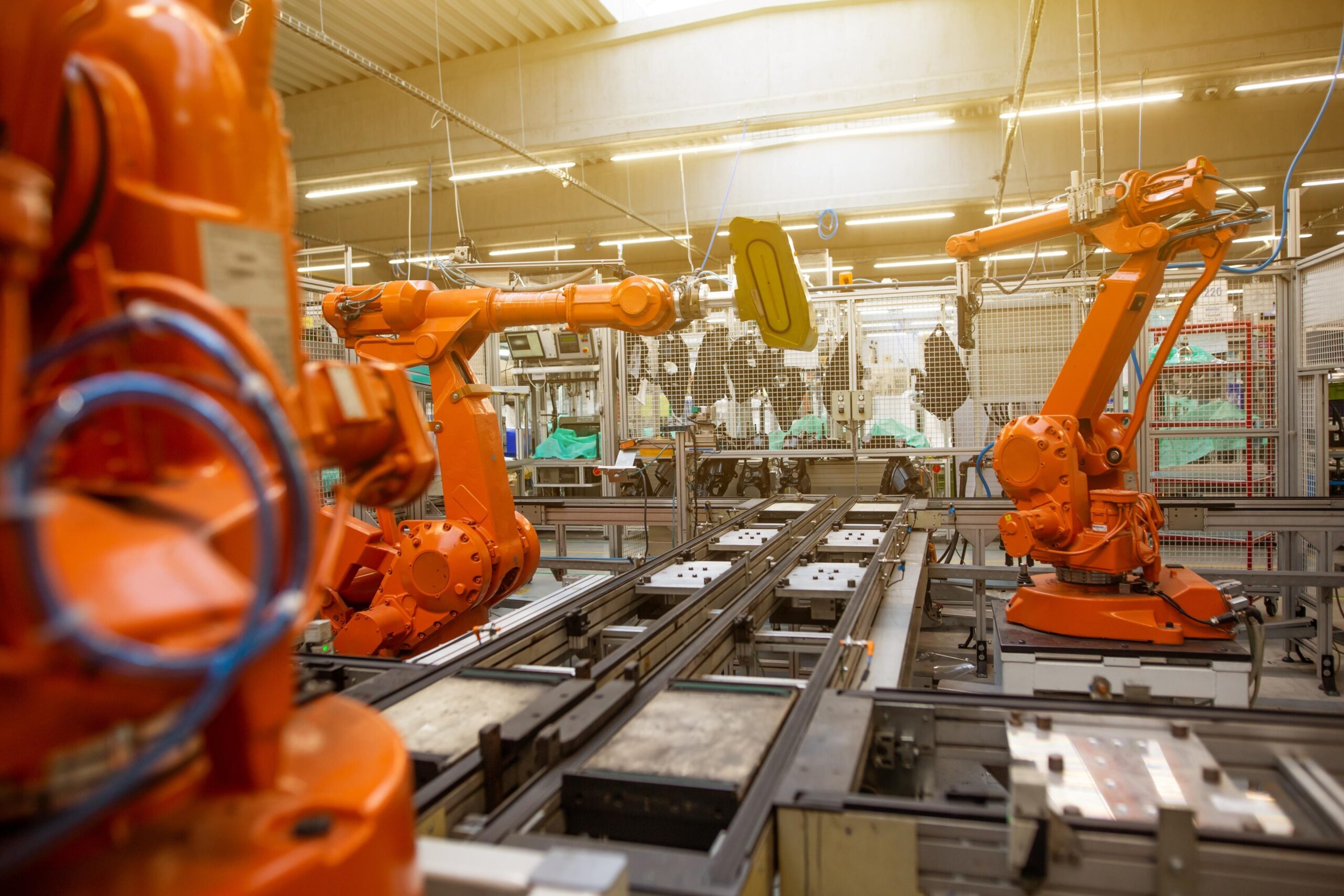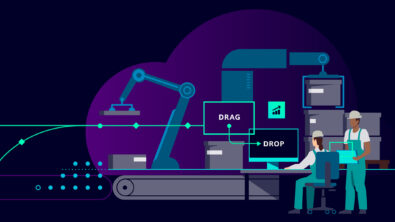Enabling low-code development with AI Transcript – Part 1

In a recent podcast Subba Rao, Director of Manufacturing Industries Cloud for Mendix, spoke about the applications of AI in low-code development for industrial application design. Check out the full podcast here or read along with the transcript below.
Spencer Acain: Hello and welcome to the AI Spectrum podcast. I’m your host Spencer Acain. In this series, we explore a wide range of AI topics from all across Siemens and how they apply to different technologies. Today I am joined by Subba Rao, Director of Manufacturing Industries Cloud for Mendix. Welcome Suba.
Subba Rao: Thanks Spencer. Thanks for having me.
Spencer Acain: Great. So before we jump into this, can you tell me a little bit about your background and your work at Siemens?
Subba Rao: Yes. So I’m currently with Mendix in the last two and a half years, which is Mendix is a Siemens business, but I’ve been with Siemens for 17 years predominantly in the manufacturing domain across automotive and aerospace verticals. And within Mendix, I’m leading the industry strategies for manufacturing vertical and also the external thought leadership, especially like how Mendix brings along with the Siemens Accelerator Portfolio creates value to our customers.
Spencer Acain: I see. So you’ve, it sounds like your focus now is currently kind of on the Mendix. And can you tell me like what does that bring for industrial manufacturers and you know, like what do we get out of, what do they get out of having Mendix?
Subba Rao: Yes. So that’s a good question. So Mendix is like it’s a leader in enterprise low-code application development. So what does it mean? It’s mainly to build complex applications that our customers, especially in the manufacturing space are looking at. So as a low-code application development, the users, they don’t have to be an expert in software development. Rather, Mendix is based on the principles of model driven development, which provides a single development environment. So irrespective of your skills, we can use the data driven models and drag and drop to build your application. And these applications can be like more adaptable experiences as well that empowers both the business technologies. You don’t need to be a technology savvy to build applications, but the business domain experts can contribute equally like an IT expert who is pretty much like did daily with software systems. And that’s a key thing with Mendix in terms of empowering the organization, whether you’re by business or IT to build applications. Now coming to the industrial context, like when I said applications, it should be adaptable to any needs for the customers, whether it might be a desktop application or it is in a mobile application, especially in the industrial context, you are getting into the shop floor, the applications that are running on different shop floor devices, or even in some cases, you want applications that are running offline, which where the network connectivity is not there. So that is the beauty of Mendix and low-code application development, where you can build these different experiences, it’s much ease, tailored to specific processes or user needs or even like domains that might be engineering or operational or even your like advanced technologies, all with keeping your systems like ERPS, PLMs or NES or quality management systems. So several systems that industrial manufacturers use, right? So empowering them to kind of like build applications augmenting all these core systems. So that’s what like Mendix brings for the industrial space and I’m really excited to kind of like see how the manufacturers are like embracing this technology and also bringing value to their own workforce along with the value to their customers.
Spencer Acain: I see, so it sounds like you’ve built a fairly, extremely smart kind of capable platform there and are you using AI to enable this and kind of what are your AI capabilities within Mendix that you’re using to enable all of this?
Subba Rao: That’s a good point. I talked about Mendix as a low-code application development, but AI is inherent in it. So when we say like AI, Mendix, as I mentioned, it’s a model driven visualizer application. So when we talk about AI and AI-enabled, which is inherent within the low-code platform that Mendix provides, the two aspects to it. One is as an application developer, so you need assistance to build applications. So that’s what we call AI assistance. This assists, it’s assisting the application developers while they’re building applications with a plethora of knowledge that’s built within Mendix. And the key driver for this capability is to improve the productivity of the application developer, whether you’re an AI, a wise developer building an application using Mendix or you are an advanced developer doing some complex application. All this to accelerate your innovations at the pace that your organization is moving. That’s one aspect. The second one is augmenting applications with AI models. What does it mean? The previous one is more assisting the application developers, but there are several data driven initiatives that are going on within the industrial space. And the goal of this augmenting applications with AI models is to enhance the application experience. When you have applications, there’s a lot of insights that might be about the productivity or that might be about the optimization or different knowledge discovery aspects that are happening, which are leveraging AI and machine learning models. How do you embed those and make it easier to augment your applications to give data driven insights? So these are the two aspects that we bring to life within Mendix. From AI perspective, one is more for the developer productivity. The other one is for the data driven intelligence for the applications.
Spencer Acain: I see so in a sense, it almost sounds like you’re using AI to build AI apps and applications and use cases. Can you go into some detail on how you’re doing that and what kind of systems you’re using and how they were trained and how you’ve achieved this result, basically?
Subba Rao: That’s a good point Spencer. When we say Mendix AI assisted, which provides the guidance to the application developers, there are a couple of things that we provide from the Mendix assist perspective. It is built with machine learning analysis that was done over like 12 million anonymized application logics. What I mean by that? Our customers are using Mendix to build applications. They are building different logics in certain sequence and refining them. All that is a knowledge that’s been there to apply machine learning. This the Mendix assist empowers them to use that knowledge base to help further in terms of getting guidance. This Mendix assist, as I mentioned, it’s all anonymized learnings over 12 million application logics applying deep learning to provide the users the real time insights in terms of what is the next best logic that you would like to apply based on the application scenario. Or even like when you are composing your application, helping developers build the logics in a much faster way. So we have some statistics which says by having this Mendix assist, the application developer productivity is kind of like increased by 30%. The other aspects like providing real-time recommendations for the next best activity that I mentioned, which is almost because it’s trained with such a plethora of knowledge base. It’s giving 95% accuracy rate and this is the power that’s kind of like we are bringing from the AI assistance perspective. And obviously it is helping the developers to automate the several things that they are used to in a much simpler way. And it streamlines the development by giving recommendations and also pre-populating any information that’s kind of like not required additional user inputs. So that’s the the beauty of it. So that’s one aspect when you talk about like AI building AI. So it’s AI assistance is built with a lot of machine learning deep learning of these logics that helps the developer with the right level of recommendations. And the same time this is mainly useful for the novice developer. If you are a novice developer, you are looking at the guidance’s that help accelerate your application development. So that’s one thing. Then if you’re advanced developer, this assistance, there are several best practices. So as I said like with the data that is there within kind of like the Mendix landscape, the best practices or guidance’s that are required, even if you’re advanced developer to kind of tell what you’re building when you’re building an application, even though it’s a visual application development tool as I mentioned earlier, you need to kind of know whether the application that you’re building is a best practice, it’s compliant to the best practices. Or it’s it’s kind of like, is it going like again certain patterns that you are supposed to add hurt, whether it might be a security compliance or it might be like logic sequence or even like development type best practices. All these kind of like for advanced developers, if they get more automated insights, the recommendations and also like identifying and inspecting the application model that they’re building against these best practices, it really accelerates the way they build those applications and deploy to their customers. So that’s kind of like another aspect and going further AI helping like building AI that you asked. Lastly, the Mendix chat, like whether you are an wise developer or an advanced developer, there are always some clarifications or questions that you as a developer would like to clarify, depending upon the complexity of the application that you’re building. So Mendix chat, which is like a generative AI powered chat bot, which will slice all the documentation, the best practices and knowledge base that is built into the Mendix ecosystem. Whenever there are questions, it’s very easy to kind of like give simple prompts chat with the system and get the guide answer. So the combination of all these is helping the developers, means like application developers to go at a much faster way and at the same time add herring to the best practices.
Spencer Acain: I think I see. So it sounds like you’ve got a very comprehensive suite here where you’re covering a wide range of potential applications and you’ve really kind of built this from the ground up based on a lot of machine learning that you’ve done on all of your available data. That is all the time we have for this episode. So once again, I have been your host Spencer Acain joined by Subba Rao for the AI spectrum podcast tuning again next time as we continue this exciting discussion on the AI applications within Mendix.
Siemens Digital Industries Software helps organizations of all sizes digitally transform using software, hardware and services from the Siemens Xcelerator business platform. Siemens’ software and the comprehensive digital twin enable companies to optimize their design, engineering and manufacturing processes to turn today’s ideas into the sustainable products of the future. From chips to entire systems, from product to process, across all industries. Siemens Digital Industries Software – Accelerating transformation.


